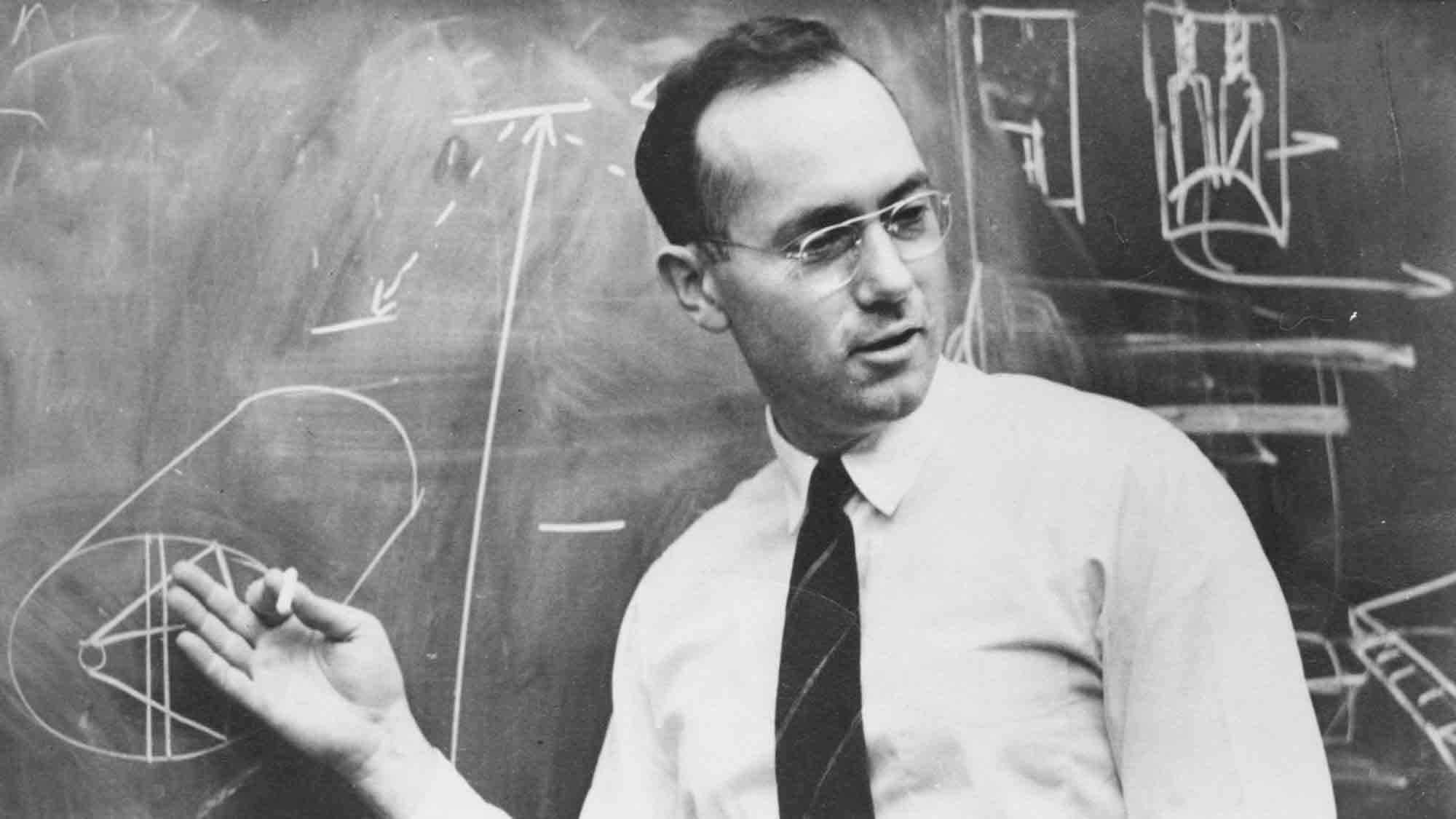Charles H. Townes was a Nobel Prize-winning physicist whose invention of the maser led to the development of the laser.
A native of Greenville, S.C., Townes was born in 1915 and grew up on Sumner Street in a home that was later razed to make room for St. Francis Hospital. He was the fourth child of Ellen Hard Townes, a homemaker and 1902 graduate of the Greenville Women’s College. Charles’ father, Henry, was an attorney and member of the Furman class of 1897. The Townes children grew up in a Baptist household that encouraged intellectual pursuits and open-minded discussions of the Bible.
Townes attended public schools and during the summers sometimes operated a small street-side stand where he sold apples and firecrackers to passers-by for a few pennies. He studied physics, mathematics and biology at Furman where he graduated summa cum laude at 19. Outside of the classroom, Townes collected specimens for the university’s biology camp, wrote for the college newspaper and was a member of the swimming team and football band.
After earning a Master of Arts in physics from Duke University in 1936, Townes packed his belongings and bought a bus ticket to Pasadena, Calif. where he enrolled at the California Institute of Technology and later earned a Ph.D. In 1940, he took a job with Bell Telephone Laboratories in New York and during World War II worked on radar bombing systems that could operate effectively in the severe humidity of the South Pacific.
After World War II, he became associate professor of physics at Columbia University and met Arthur L. Schawlow, who became his research assistant. The two would eventually combine their energies (and become brothers-in-law) to make major advances in the field of microwave spectroscopy.
In 1951 Townes, along with many other physicists, was studying how to use microwave spectroscopy to better examine molecular structure. As part of his research, he chaired a Navy-sponsored committee that encouraged research that might result in the generation of waves shorter than those of current radar systems—a goal that had proven elusive to researchers around the world.
One spring morning before a committee meeting in Washington, D.C., Townes woke up early and, because the hotel restaurant was not yet open, went outside to greet the day. As he sat on a bench, wrestling with his research questions, a solution popped into his head, and he quickly jotted it down on a piece of paper. His sudden insight led to the development of the first working maser, a device that amplifies electromagnetic waves, and soon thereafter, in collaboration with Schawlow, to the invention of the laser, which amplifies and directs light waves into parallel direct beams. Ultimately, it resulted in an astonishing array of discoveries now in common use in medicine, telecommunications, electronics, computers and many other areas. A statue on Main Street in Greenville marks the moment that Townes was sitting on a park bench in Washington, D.C.
In 1955, Townes and Schawlow co-authored the influential book Microwave Spectroscopy, and in 1960 they shared a patent for the laser. In 1961, a year after Frank Drake and associates launched the first scientific search for radio transmissions from distant solar systems, Townes co-authored a paper with R.N. Schwartz in Nature that proposed using the optical spectrum for similar indications.
Townes received the Nobel Prize in Physics in 1964 with two physicists from the Lebedev Institute in Moscow, Aleksander Prokhorov and Nikolai Basov. They were honored for “fundamental work in the field of quantum electronics which has led to the construction of oscillators and amplifiers based on the maser-laser principle.”
Townes has served as provost and professor of physics at MIT, director of the Enrico Fermi International School of Physics, and university professor of physics at the University of California. He holds honorary degrees from more than 25 institutions (including Furman) and is the recipient of close to 100 honors and awards.
In 2005, he was awarded the Templeton Prize for his efforts to build bridges between science and religion. According to the Templeton website, Townes’ “seminal 1996 article, ‘The Convergence of Science and Religion,’ established him as a unique voice – among scientists, in particular – seeking commonality between the two disciplines.”
